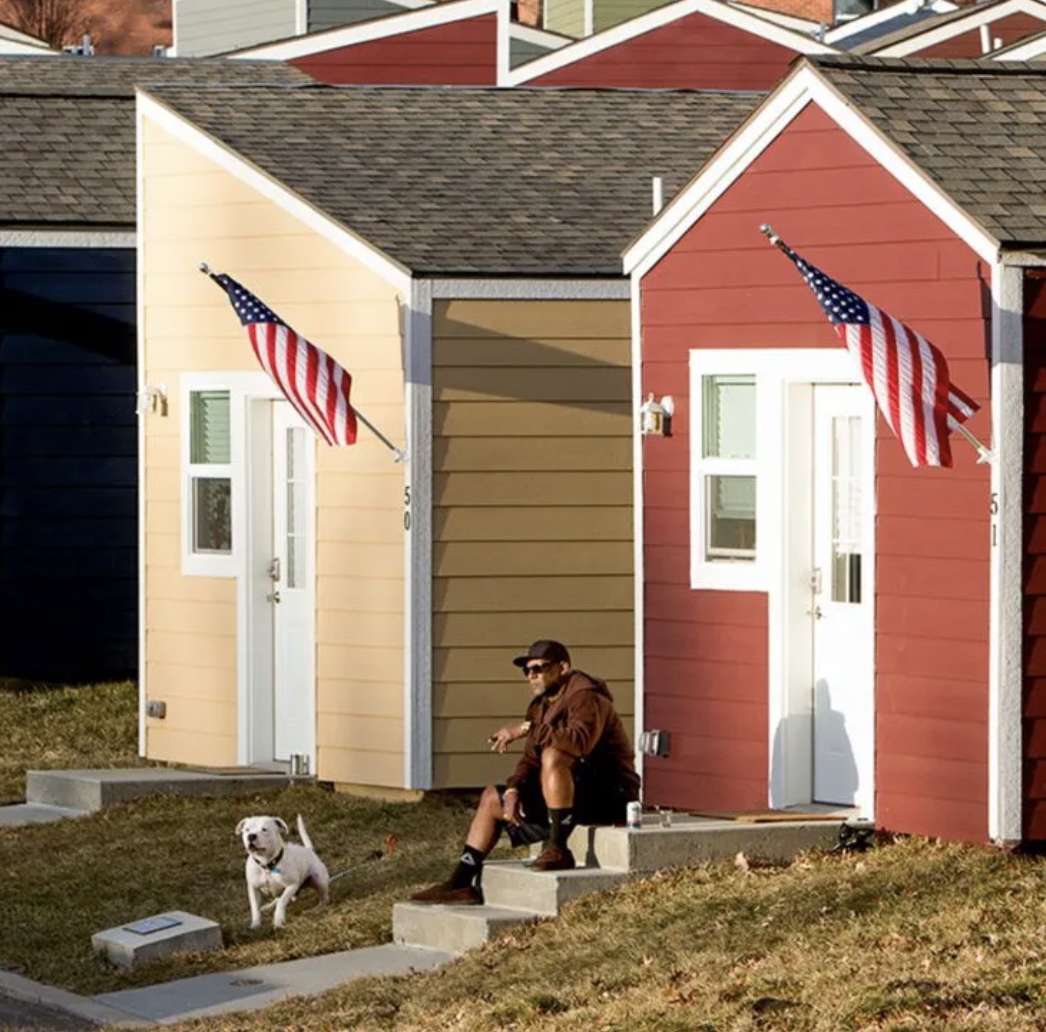“There’s no catch — this is what we owe you.”
That’s what Bryan Meyer tells veterans struggling with homelessness when he welcomes them to one of the homes at a Veterans Community Project (VCP) village.
Meyer, CEO of the Veterans Community Project, is a Marine veteran who served multiple tours in the Middle East. And he knows what it’s like to feel lost in the land he once fought for. Meyer struggled to fit in when he returned to the U.S., ending up in legal trouble until a judge helped him find counseling.
“I was lucky enough to run into a handful of other veterans in Kansas City who all felt the same way. We all said to ourselves, there’s got to be something a little bit better out there for veterans,” Meyer told the crowd at the groundbreaking for a new VCP Village in Milwaukee on Oct. 13.
VCP builds communities of tiny homes as transitional housing for homeless veterans. They also provide on-site case management to address underlying issues like mental health and employment skills, helping veterans get back on their feet and transition into long-term, permanent housing.
“Homeless veterans are sleeping in our city streets and parks,” Meyer said. “They’re our neighbors, mothers, brothers, and sisters.”
Vincent Morales, another VCP co-founder, served in Iraq and Afghanistan. During a recent roundtable of veterans service organizations hosted by Philip Morris International’s U.S. businesses, he acknowledged that the tiny-home idea strikes the average civilian as odd. Veterans have a different view.
“From a war fighter perspective, specifically the global war on terror generation, if you had 240 square feet to yourself — with air condition and running water and all the amenities that our projects have — while serving in Iraq or Afghanistan, you definitely were doing something right,” Morales said.
“For the global war on terror generation, these tiny houses are a second home.”
Today there are six VCP tiny-home villages across the country serving some of the estimated 32,000 veterans who face homelessness each night across the U.S.
One of them was “Chris” — no last name — who made an impression on Meyer as he went through the program.
“Chris is an Iraq veteran. We’re around the same age, and he became completely street homeless, completely cut off from his family, no custody rights, anything like that,” Meyer recounted. “Eventually, he came to our Kansas City village.”
After staying in one of the tiny houses and getting support from both the professionals on-site and the community around him, Chris found his way.
“He went on to earn his college degree, and he’s now a manager in our construction business. He can see his kids again and he even recently purchased a home of his own.”
Stories like that are why PMI U.S. supports VCP and other military-affiliated nonprofits, said J.B. Simko, chief civil society and underage prevention officer.
“VCP Village is a powerful example of what is possible when people come together with purpose and compassion. We’re proud to see our partnership translate into real impact — providing safe, dignified housing and a fresh start to those who have served our nation as part of the U.S. military.”
One challenge often facing efforts to build housing for those struggling with homelessness is NIMBY (“not in my backyard”) resistance. But Meyer says his projects have been welcomed by the communities they’re in.
“Every single location has actively recruited us,” Meyer said. “We received a lot of interest from the city of Milwaukee, who were really interested in bringing Veterans Community Project to their town, to their community.”
One supporter of the Wisconsin project is Gov. Tony Evers, a Democrat from Plymouth, Wis., who was present for the recent groundbreaking.
“These tiny homes are more than a roof overhead and a safe place to sleep at night, they are a foundation that will help restore dignity, stability and community for those who have sacrificed so much for all of us,” Evers said. “I have no doubt that our veterans will be in good hands once this tiny home Village comes to life. This is an important one, Milwaukee — let us get it done.”
While the houses may be tiny, the results have been huge. According to VCP, they have an 85% success rate for veterans who complete the program.


